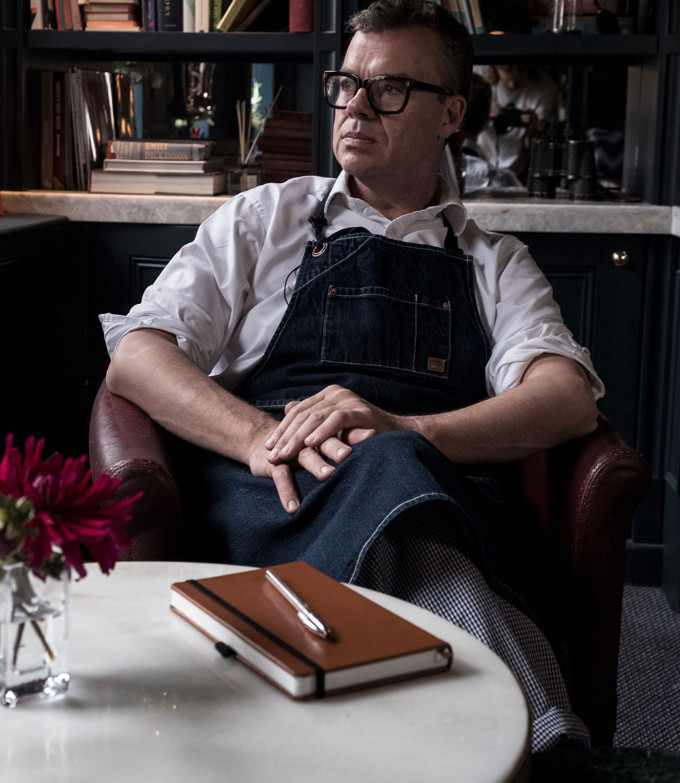I’m behind the counter at Hart Bageri – a grey-stone bakehouse and cafe in Frederiksberg, Copenhagen – dodging scurrying hands and scuttling feet. Trays upon trays of scorched sourdough loaves are being taken out of the oven as Richard Hart, its eponymous owner, shows me round his year-old pride and joy.
The tour begins and ends at the mixing bench, where we spot a few tubs of graded flour on the side and Richard begins to explain how he uses each of them. The interview hasn’t strictly begun, but when Richard Hart talks bread one is minded to listen; my phone recorder goes on and our weekend at one of the world’s buzziest bakeries, shadowing its charismatic owner, is underway.
“The 65 here is really low protein, super soft. The 45 and 55 are a little stronger but you don’t want only strong flour when you’re making a blend – if you have only strong flours you’re going to end up with tough bread. You want light as air, soft bread… crispy, chewy. (Blending flours) is just something we’ve always done.”
So, I ask, what’s the optimal blend?
“It changes from day-to-day. White flour, some wheat flour, there’s no set recipe, there’s no set formula. We could make the bread out of a hundred different formulas.
“We tweak as we go. Always playing. Without fear. We’ll get a couple of days where it’s good, then something’s lacking, so we might alter the percentage of the flour, add a little more water. We’re constantly searching for the perfect loaf that we’ll never find.”
— —
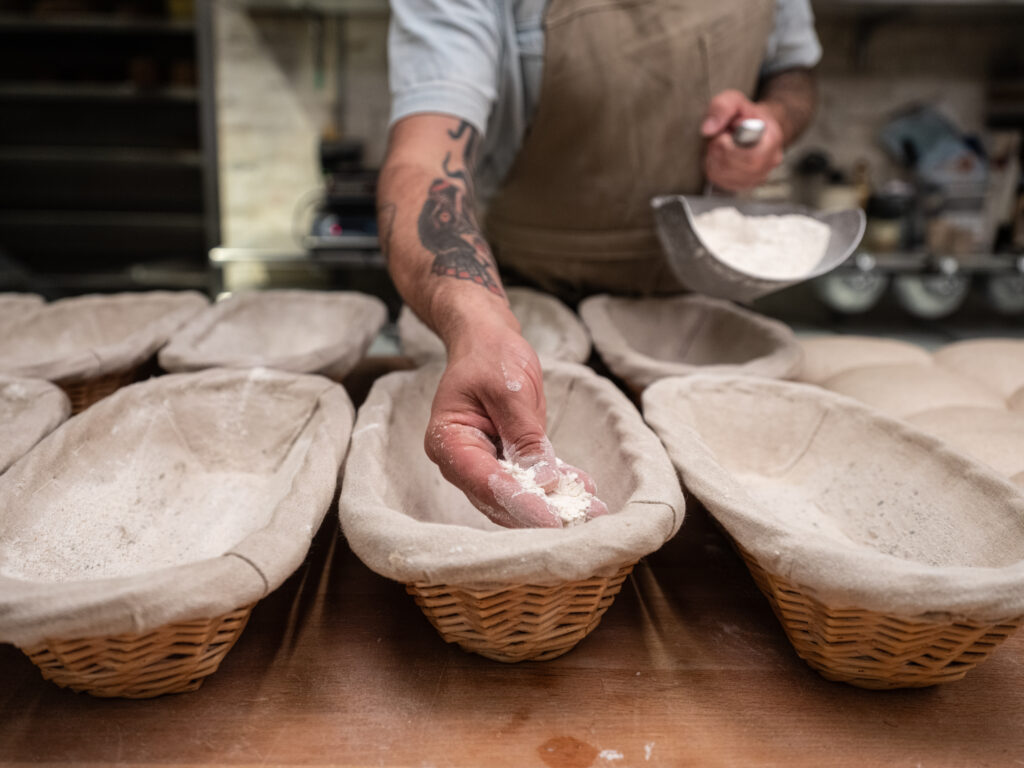
Thirty minutes later and our chat has spilled out into the bakery’s backyard, where the Hart Bageri team come to escape the swollen heat of the kitchen and take pictures of new bakes for Instagram.
Richard sits on a small bench, rhapsodising on everything from the acidity levels in rye to the importance of keeping dough hydrated. He is compelling in conversation and animates when talking about a particular aspect of his craft or method. Every insight comes glazed with swear words and vowels are stretched for emphasis. At times I sense he is nagged by the suspicion that what he is trying to explain is essentially incommunicable. That words serve poor justice to his profound intuition.
But before we go deep into the hows I’m keen to understand more of the whys: why does he bake the way he does? Why after being head baker at San Francisco’s Tartine (whose books line the shelves of every serious breadmaker in the Western world) did he decide to come to Copenhagen, to prove himself in a new city with an arcane bread culture of its own? Moreover, why after working as a cook in fine-dining kitchens did he turn to baking in the first place?
Richard’s story begins in East London, where he grew up and worked his way through the starchy kitchens of second-wave masters like Jason Atherton before running his own kitchen in Bethnal Green. But this story – one which takes him from, in his words, a technically good cook (albeit one without a voice of his own) to setting up a bakery with René Redzepi – begins in the small Northern California city of Petaluma.
Richard had moved to the US to advance his cooking career. Finding himself with time on his hands (at the time there were strict overtime laws in California), he set about learning to make bread to add another dimension to his kitchen-craft. Until then, his baking exploits had consisted of whipping up a few loaves whenever one of his kitchens had run out, using the recipes of his favourite chefs.
“I would follow the recipe to the T and I would always make the shittest fucking bread,” he explains. “I’m following the recipe, why can’t I make it? Of course I couldn’t make it, I had no idea about anything – flour, gluten, yeast. I felt like that was something that was missing in my pathway.”
A tip-off from a colleague prompted Richard to seek out Della Fattoria, a nearby bakery that was supplying bread to The French Laundry. He emailed the owner and was given a trial shift.
“I had no idea what I was getting myself into. I imagined a French Laundry-style bakery, stainless steel perfection. It was the polar opposite. They’re growing corn, vegetables, tomatoes. There are chicken and sheep in the fields, it’s literally a fucking farm.
“There’s this barn with two wood-fired ovens and it looks like they’re baking thousands of years ago. There’s these bakers covered in tattoos, wearing bandanas, looking like rockstars. I had come from strict fine dining restaurants where you wear chef whites. I fell instantly in love with it.”
That love was sustained through fourteen-hour days at the literal coal-face, getting to grips with sourdough for the first time (“I was like, well, where’s the yeast?”) and mastering the vagaries of cooking over fire.
“It was a real fucking eye opener and I just stuck it out,” he says, nostalgically. “That place is the reason I’m a baker, hands down.”
Unlike many of the restaurants he had worked in, Della Fattoria welcomed people from all walks of life. For the first time, Richard was able to square what he did for a living with his roots in working class East London.
“I worked in fine dining restaurants for most of my career. But it was always French fine dining. You really just get to feed the elite. Or people that have got a lot of money. Or real foodies, you know. Now I’m a baker I can feed everyone. I can put all my heart into it and make a loaf of bread that is fucking primo. It’s not out of anyone’s price range.”

Eventually, Richard’s restless ambition returned and his eyes began to wander down Highway 101 towards a small bakery making waves in San Francisco.
“So after a year at this place I was obsessed. I was reading every bread book I could get my hands on, going to every bakery. I went to Tartine and I got a loaf of their bread: instantly I knew I had something special. It just looked far different to anything I had had in my hands, smelt different.
“I took it to the owner of this place and she was a 65-year-old woman – my first bread mentor, I guess. She was like, ‘wow doesn’t this make you green with envy’? The minute she said that to me I was like okay I’m leaving; I need to go and work for this guy, obviously.”
A job at Tartine didn’t come easy. Richard recalls a slightly comical twice-weekly routine whereby he would drive down to Tartine to ask for work and mine owner Chad Robertson for insights. But Tartine at that point was a small operation, there was no room for this pushy Englishman. The charade lasted a year and left Richard so frustrated he contemplated returning to England. Then the call came: a role had opened up. Richard’s persistence had paid off.
It must have been a step up, I say to him. But before he can answer we are interrupted by one of his team. An old schoolfriend is here to see him, over from London.
“Oh, is it Darryl? It’ll be Darryl. I want you to feed him lots of food, give him lots of drink, and say I’ll be with him in, like, twenty minutes.” Without missing a beat, he continues.
“It wasn’t a step up, it was the opposite. I went from making 1200 loaves a day to 100. I wasn’t actually that happy in the beginning, it had taken me a year to get a job there and I got there and the old head baker’s way of training you was to not really train you; it was to throw you little tidbits.
“It was like, do you want to take these last few loaves out of the oven? I was like, I’m good enough to do the whole oven! So how about I do that? No, you’re not ready. It was kind of frustrating. Especially because it took so long to get there. But I persevered and got on really well.”
So well, indeed, that after working his way up the ranks and impressing Chad while looking after one of Tartine’s outposts, Richard was promoted to the position of head baker which he held for seven years. He has a better perspective than most on what makes Tartine so special.
“At the place before you were a robot, you were a cog in the wheel and the wheel ran very smoothly every day. At Tartine, you became a baker. You learnt how to fine-tune everything, you learnt how to manipulate the crust, how to manipulate the crumb.
“You know, back then we felt like there would be nowhere to go, it felt like we were baking in the best place. Chad was amazing to work for, he was amazing to work for.”
Chad must be proud of what you’ve achieved here, I say. Has he been over to visit? Richard’s expression changes and he looks momentarily chastened (as he does a few times over the weekend, as though there has been a deeper price to pay for his creative upsurge). He wavers before answering.
“No, not since I’ve opened; it’s been a year. Hopefully I’ll get to see him again soon.”
— —
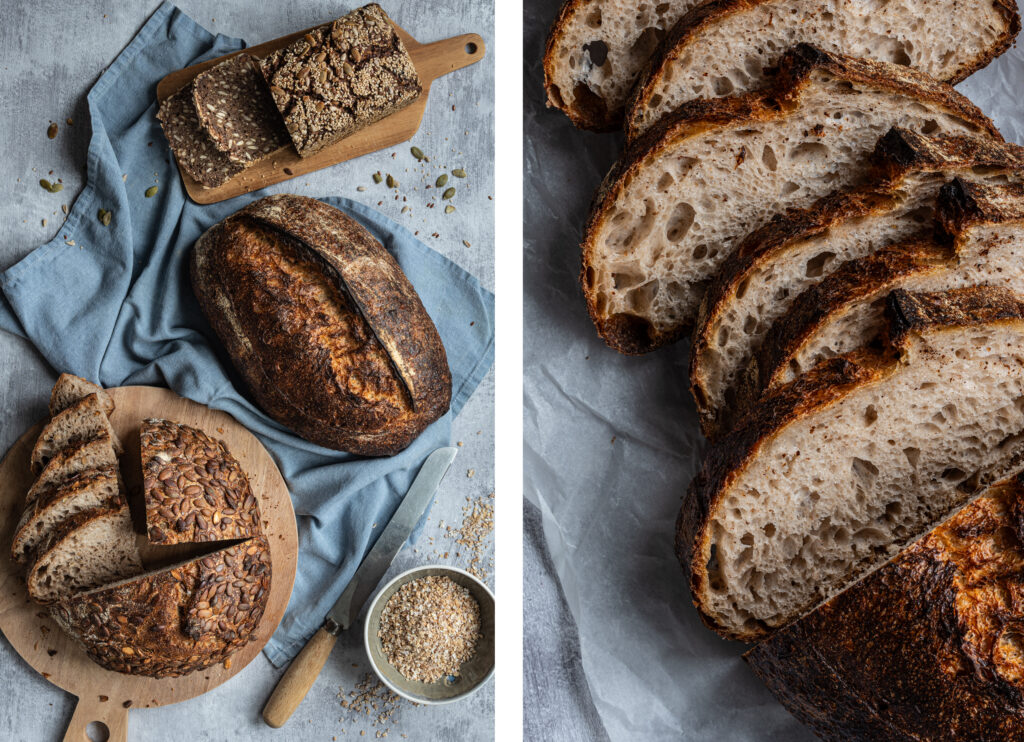
When Richard swapped California for Copenhagen there was one thing he made sure to pack in his luggage: his tried-and-tested sourdough starter. He moved into a rented apartment and tended to it as one would a wild animal, while searching for sites during the day. But the animal wasn’t happy in its new surrounds.
“The starter reacted and it had all this new bacteria in it,” he recalls. “It smelt fucking disgusting. Blue cheese, vomit… I don’t know what happened but it was fucked.”
The starter eventually died, teaching him a valuable lesson in the process: whatever he had achieved at Tartine was gone. Here he needed a fresh approach and a new way of looking at things. Luckily, his business partner René Redzepi had inspiration to burn. He invited Richard to spend some time in noma’s test kitchen.
“Their pantry of ingredients was mind-blowing. They gave me so many things to try I had to go away for a day to process it all in my head. Different condiments and moulds and dry spices and everything you could ever imagine. It was like seeing a whole new load of colours you had never seen before.”

His time there provided a breakthrough in his quest to put his own spin on a Danish favourite: rye bread. From the start, René had stressed that his success in Copenhagen depended on it.
“They had a miso that they had made out of rye bread. Normally you use soy beans and koji, they were using koji and rye bread. It was so flavourful and delicious. Like Marmite but with loads more going on. So much umami.
“I started using that in my rye bread – ‘I give you my rye bread, you’ll turn it into rye miso and then we’ll put it back into my rye bread’. It seemed like the perfect circle. Then all of a sudden it started to get a new layer of flavour.”
And then there’s the sourdough, a yeast-forward, fiendishly salty, loose-crumbed bake which draws in visitors from all over the world. Richard set out to create a loaf that could rival Tartine’s and reflect his new environment. After establishing a new yeast starter and searching many of Europe’s wheat farms for complementary flours, it was job done. The City Loaf – a cheeky nod to Tartine’s famous Country Loaf and his urban setting – has become an immovable fixture on Hart’s menus alongside the rye. Beyond which his team are free to layer on other bakes as they see fit. On the autumn days we are present there is a pumpkin seed wheat loaf that bears the house style but with malty, umami flourishes.
While Tartine’s influence runs like a vein through Hart Bageri, from its recruitment of bakers through to the style of bakes themselves, Richard is keen to point out that his bakery is a reinvention not a replication of his previous methods. Besides, he argues, the recipes that work at Tartine wouldn’t work the same in Copenhagen anyway. The flour is different, as is the climate and equipment.
He’s also switched up the working hours. Hart’s team are prohibited from arriving any earlier than 6am, an hour and a half before the bakery opens to the public. He would like to have opened later but the Danes like to get their bread early, he explains with a wink.
“I tried to design the place so it makes sense. I don’t want to work in the middle of the night because it makes you feel like shit. Who wants to get up at 2am and go to work? No-one. Don’t tell me that it’s good for you. Some bakers get up at midnight, or get up at 11pm – that is fucking awful.”
——
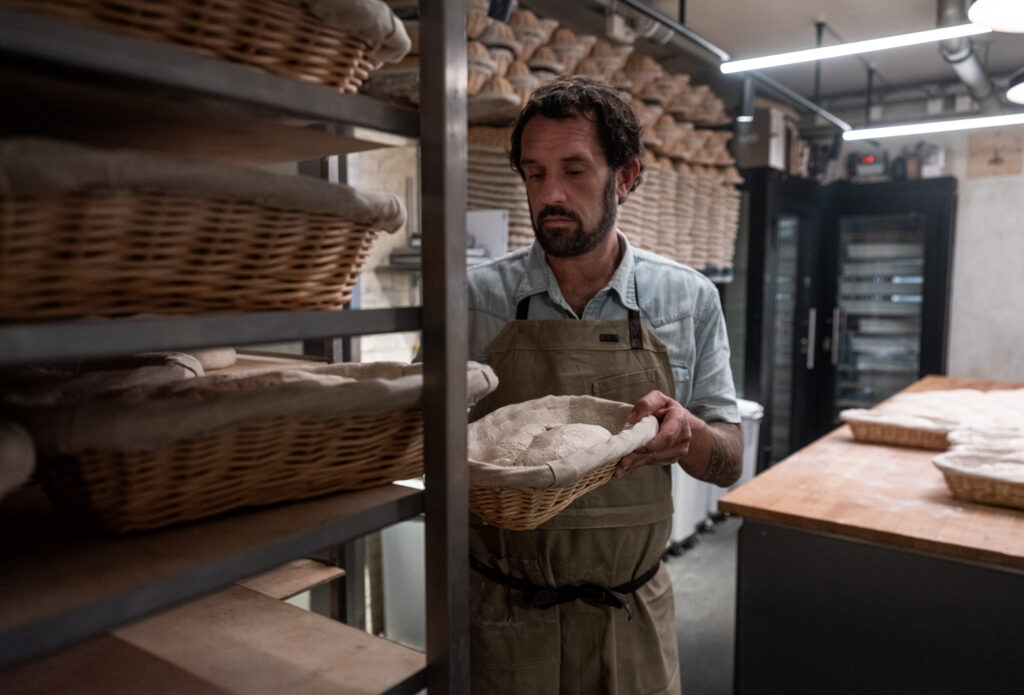
“I heard something,” Richard begins, momentarily putting down his pastry brush. It’s my last day at Hart Bageri and I’m watching Richard and Wendy, one of a few bakers who followed him to Copenhagen from Tartine, paint butter into rye loaf tins. “I can’t even remember where it came from but I always stick with it: the bread baker is like a yeast farmer.”
Wendy doesn’t look up as I click my phone onto record once more. “The yeast are your cattle, the dough is where they live, it’s their plain, it’s their field, they graze on the flour. Basically what you’re doing is you’re raising the cattle, you’re raising the colony of yeast and under the correct conditions you have the most perfect breed of animal. That turns into your bread.”
It’s an idea that he has brought up in several of our chats: that a baker is not a craftsman but a cultivator. That technique is one thing, but true mastery lies in understanding the conditions and manipulating them in your favour. It’s a philosophy his erstwhile mentor Chad Robertson has termed “intuitive bread making” and one to which Richard ardently subscribes. Hence, while bakers at Hart are given broad blueprints, they also have the freedom to adjust according to instinct.
That’s asking a lot of your team, I say.
“There’s some people that instinctually get it and there’s some that don’t. But it makes more sense than baking by numbers. When you bake by numbers you get tricked, because things change. It’s a living thing. It wants different things on different days – hotter today, colder tomorrow. So many different minute aspects.
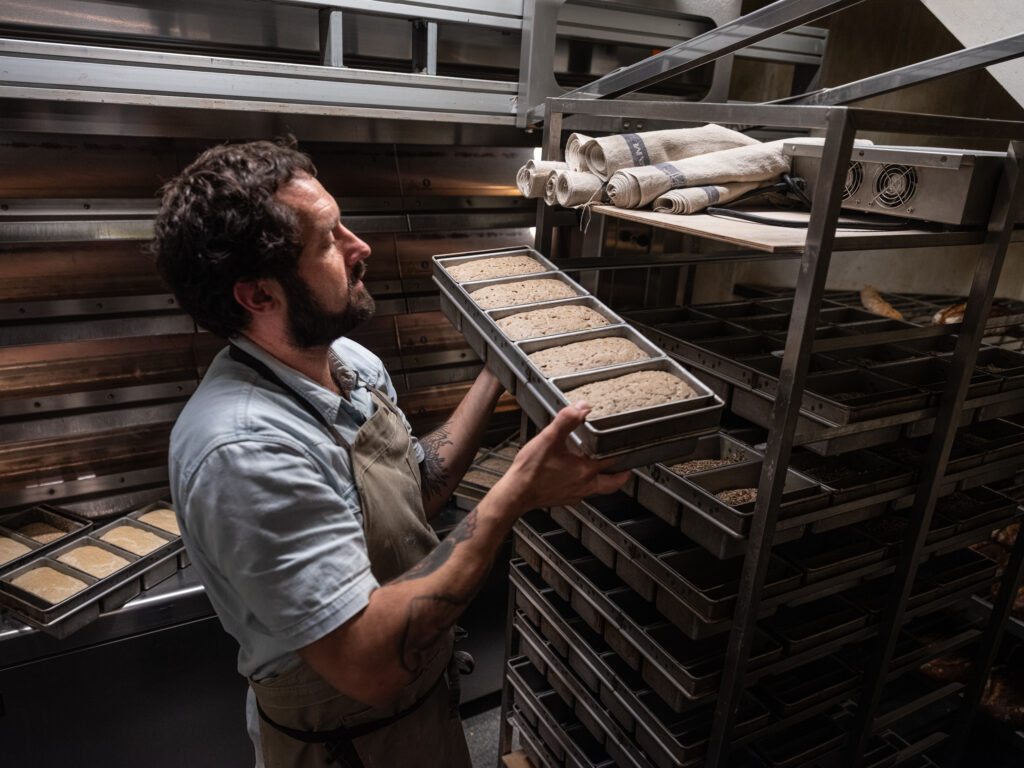
“My big thing now is: we’re going to learn the rules and then we’re going to bend the fuck out of them or completely break them. Because I believe that there are new paths. I believe the way we make bread today is not the way we made bread ten years ago, twenty years ago. It’s changing constantly. What we did at Tartine, we don’t do that anymore. We changed everything. We changed the way we feed our starters, the way we feed our dough, the way we mix the dough. There’s no set way.”
While Richard has commercial ambitions for Hart and plans to set up bakeries in other cities, I get the sense that what really drives him forward, sustains him through the gelid Copenhagen mornings, is the elusive nature of the craft itself. Forever chasing that perfect loaf he knows he will never find.
“My mum always said you’re going to be so bored being a baker, you used to be a chef and have all these ingredients. No. I’ve never been so challenged. Constantly enquiring, constantly pushing. I’m not going to stop making bread until I’m dead.”
Words: Isaac Parham
Photography: Stefan Johnson



